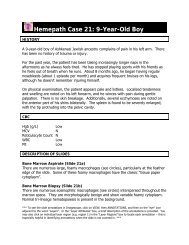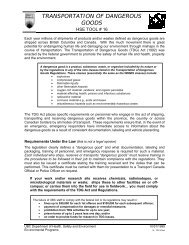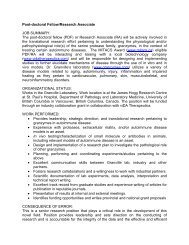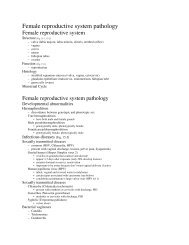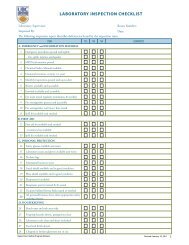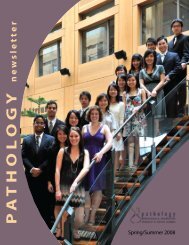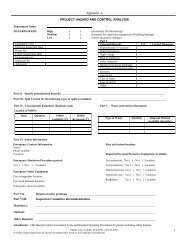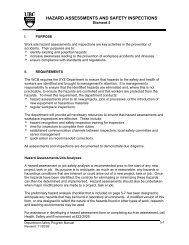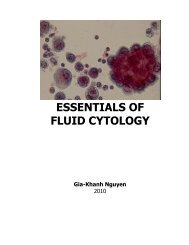Abstract Book - Pathology and Laboratory Medicine - University of ...
Abstract Book - Pathology and Laboratory Medicine - University of ...
Abstract Book - Pathology and Laboratory Medicine - University of ...
You also want an ePaper? Increase the reach of your titles
YUMPU automatically turns print PDFs into web optimized ePapers that Google loves.
POSTER presentationGRADUATE STUDENTBASIC SCIENCESABSTRACT #35The effect <strong>of</strong> PEGylation on intracellular signaling <strong>of</strong> lymphocytesDana Kyluik 1 , Dan Wang <strong>and</strong> Mark Scott1Department <strong>of</strong> <strong>Pathology</strong> <strong>and</strong> <strong>Laboratory</strong> <strong>Medicine</strong>, UBC; 2 Canadian Blood Services <strong>and</strong> UBCCentre for Blood Research, VancouverBackground /objectivesThe covalent attachment <strong>of</strong> non-immunogeneic polymers, such as methoxypoly(ethylene glycol) [mPEG] tothe surface <strong>of</strong> cells has been shown to dramatically reduce in vivo antigenic recognition <strong>and</strong> immunogenicity.Recently, our laboratory demonstrated that PEGylated allogeneic leukocytes induced an immunosuppressive state(increased Tregs <strong>and</strong> decreased Th17 cells) both in vitro (human <strong>and</strong> mouse) <strong>and</strong> in vivo (murine transfusionmodel). This finding was in stark contrast to the proinflammatory state induced by unmodified allogeneic cells.Thus, PEGylation may be a promising approach in the prevention <strong>of</strong> allorecognition <strong>and</strong> the induction <strong>of</strong>immunotolerance in transplantation. However, our studies to date have not defined the underlying molecularevents inducing the tolerogenic response in PEGylated cells. It is our hypothesis that the loss <strong>of</strong> allorecognition inPEGylated cells results in changes to intracellular signaling cascades giving rise to both altered cytokine secretion<strong>and</strong> changes in T-cell differentiation.MethodsJurkat cells were modified with or without activated 20 kDa mPEG at 0.5 or 2 mM for 60 minutes. Cells werestimulated for 12 minutes with mitogens to trigger proliferation (phytohaemagglutinin [PHA]). Cell lysates wereassessed for phosphorylation status using human phospho-kinase array kits. Membranes were analyzed for relativelevels <strong>of</strong> phosphorylated protein using Chemigenius s<strong>of</strong>tware.ResultsPhosphorylated intermediates important in negative regulation <strong>of</strong> apoptosis such as Akt <strong>and</strong> Erk1/2 weresignificantly decreased in modified cells stimulated with PHA compared to PHA stimulated unmodified cells, aswell as unstimulated control cells. This may indicate a lack <strong>of</strong> inhibition <strong>of</strong> pro-apoptotic regulators such as Bim<strong>and</strong> Bad. In addition, the down-regulation <strong>of</strong> CREB, which is a mediator in the Ras/Raf pathway important fortranscription <strong>of</strong> anti-apoptotic proteins such as Bcl-2 <strong>and</strong> Bcl-xL, also occurred in modified Jurkat cells.ConclusionsThe initial phosphokinase screen indicates that various intermediates important in cell survival are decreased,suggesting a pro-apoptotic cell fate in modified cells stimulated with PHA. This initial data may indicateimportant signaling pathways <strong>and</strong> targets for further investigation.Oral/Poster Presentations * 2012 47




